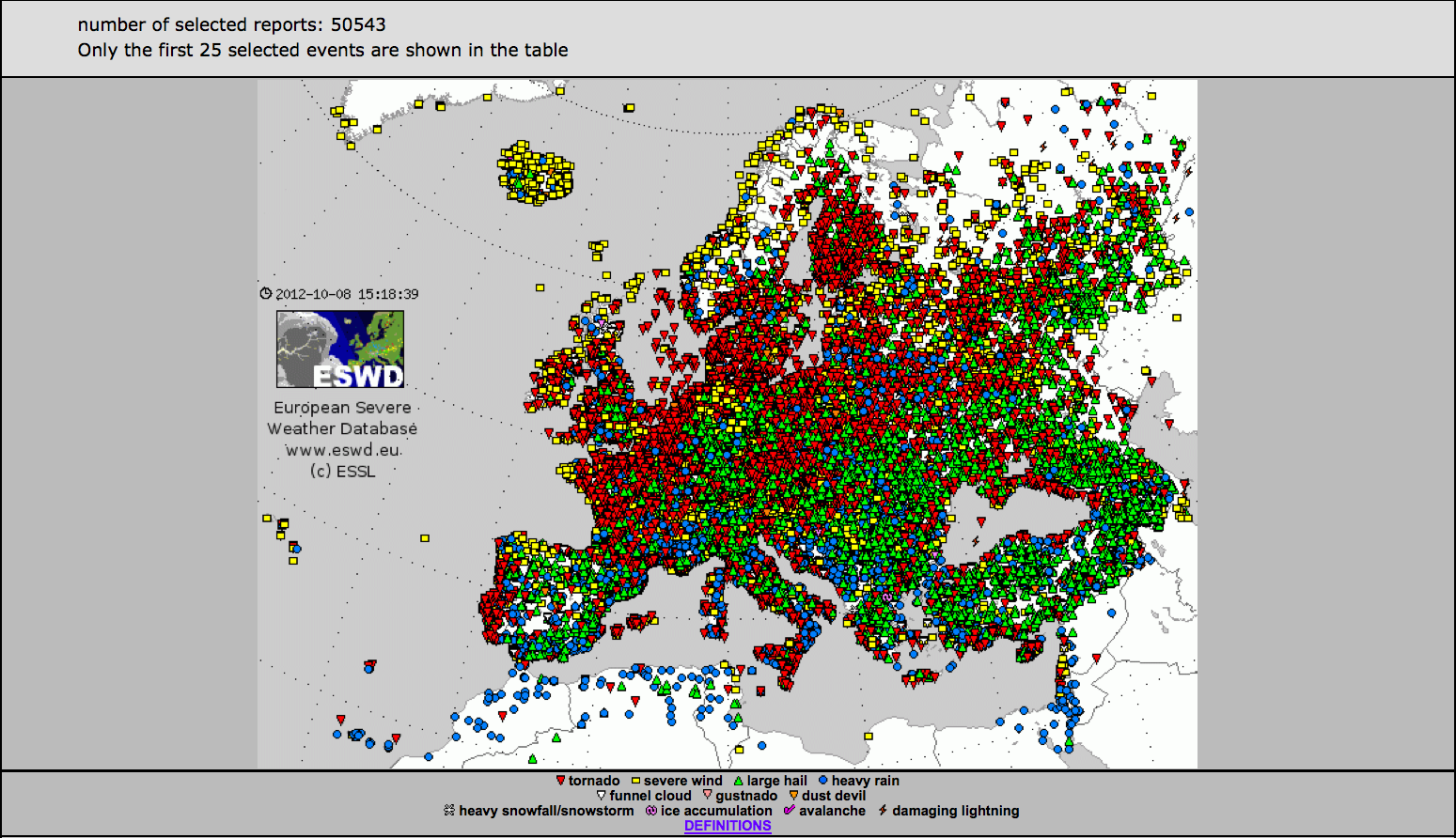Extreme Weather impacts on European Networks of Transport
Since December 2009, ESSL is involved in the EU-funded project EWENT. The objective of the EWENT project is to assess the impacts and consequences of extreme weather events on EU transport system. These impacts are monetised. EWENT also evaluates the efficiency, applicability and finance needs for adoption and mitigation measures which will dampen and reduce the costs of weather impacts. The methodological approach is based on generic risk management framework that follows a standardised process from identification of hazardous phenomena (extreme weather), followed by impact assessment and closed by mitigation and risk control measures.
EWENT will do this by identifying the hazardous phenomena, their probability and consequences and proceed to assessing the expected economic losses caused by extreme weather when it impacts the European transport system, taking also into account the present and expected future quality of weather forecasting and warning services within Europe.
Enhancements of the European Severe Weather Database (ESWD)
The ESWD collects reports about events that are local, short-lived and severe, such as large hail, severe winds and tornadoes. Reports of such events are available on an infrequent and inhomogeneous basis. Many of these events are not measured by conventional weather station networks due to their relatively small spatial and temporal scales. The reports in the ESWD are therefore collected are assembled through various sources including several National (Hydro-) Meteorological Services (NHMS), voluntary observing networks, the general public as well as the media and other web sources.
The European Severe Weather Database (ESWD) was first introduced by Fulvio Stel and Dario Giaiotti during the European Conference on Severe Storms (ECSS) 2002. It collects reports of eleven severe weather types occurring throughout Europe and adjacent regions. The reports of the ESWD are freely accessible via the web-interface www.eswd.eu, which started its operational phase in 2006. Since its introduction, the ESWD has been upgraded a number of times in terms of data format, web-interface, data sources, etc. The following paragraphs summarize the enhancements within the project EWENT.
Within EWENT, the number of event types was enlarged. Those which are usually of convective nature: dust devil, funnel cloud, gustnado, heavy rain, large hail, tornado and severe wind events were complemented by winter event types: avalanche, heavy snowfall, ice accumulation, and by damaging lightning. The precise definitions of the weather types are described on the webpage.
 |
Figure 1: Spatial distribution of all reports in the ESWD (30 May 2012). Note that symbols overlap each other.
Within the project EWENT, data from three countries were included into the ESWD, namely Austria, Cyprus, and Finland. The general public is encouraged to report their observations of severe weather via the ESWD webpage. To simplify the reporting process, the webpage is available in fourteen different languages. The following four were added within the project EWENT: Portuguese, Estonian, Turkish and Russian.
The ESWD contains 43,400 reports (figure 1). The number of reports is rapidly increasing, especially of the four newly included weather types.
ESSL’s Partners in EWENT are:
Technical Research Centre of Finland (VTT), German Aerospace Center (DLR), Institute of Transport Economics (TÖI), Foreca Consulting Ltd, Finnish Meteorological Institute (FMI), Meteorological Service of Cyprus, Österreichische Wasserstraßen Gmbh (Via Donau) and the World Meteorological Organisation (WMO).
For more information, please visit the EWENT website http://ewent.vtt.fi.

